- Benefits of Pinching Petunias
- 1. Promotes bushier growth
- 2. Enhances flower production
- 3. Improves airflow and reduces disease
- 4. Enhances plant shape and appearance
- 5. Extends the blooming period
- How to pinch petunias
- Techniques for Pinching Petunias Properly
- 1. Start pinching when the petunias are young
- 2. Pinch off the stem above a leaf node
- 3. Pinch regularly throughout the growing season
- 4. Remove spent blooms
- 5. Dispose of pinched stems and blooms properly
- 6. Water and fertilize after pinching
- 7. Consider using a liquid fertilizer
- The Importance of Fertilising Petunias
- Why is fertilising petunias important?
- When and how to fertilise petunias?
- Conclusion
- Choosing the Right Fertiliser for Petunias
- 1. Understanding the Nutritional Needs of Petunias
- 2. Choosing the Right NPK Ratio
- 3. Slow-Release vs. Water-Soluble Fertilisers
- 4. Organic vs. Synthetic Fertilisers
- 5. Additional Considerations
- Conclusion
- Tips for Properly Fertilising Petunias
- The Art of Picking Petunias
- 1. Timing is Key
- 2. Look for the Perfect Bloom
- 3. Use Clean and Sharp Tools
- 4. Avoid Damaging the Plant
- 5. Cut at the Right Angle
- 6. Remove Spent Flowers
- 7. Handle with Care
- 8. Enjoy the Fruits of Your Labor
- Best Practices for Picking Petunias
- 1. Timing
- 2. Tools
- 3. Selecting Flowers
- 4. Stem Position
- 5. Removing Flowers
- 6. Deadheading
- 7. Storage
- 8. Arranging the Flowers
- 9. Enjoying and Maintaining
- Questions and Answers:
- What is pinching in petunias and why is it important?
- When should I pinch my petunias?
- How do I pinch petunias?
- What is the benefit of fertilising petunias?
- How often should I fertilise my petunias?
- What type of fertiliser should I use for petunias?
- When should I pick the flowers from my petunias?
- Videos: Trimming Petunias // Garden Answer
Petunias are beautiful flowers that can brighten up any garden or patio with their vibrant colors and delicate petals. Whether you’re a seasoned gardener or just starting out, this ultimate guide will provide you with all the information you need to take care of your petunias and ensure they thrive.
One of the key practices for maintaining healthy petunias is pinching. Pinching is the process of removing the tips of the plant’s stems to encourage branching and fuller growth. This helps create a bushier and more compact plant, which in turn leads to more flowers. To pinch your petunias, use your fingers or a pair of clean gardening shears to snip off the top inch or two of the stem. You can do this throughout the growing season to keep your petunias looking their best.
In addition to pinching, proper fertilization is essential for the health and vitality of your petunias. Petunias are heavy feeders, meaning they require regular doses of nutrients to thrive. Be sure to use a balanced, slow-release fertilizer or a liquid fertilizer every two to three weeks during the growing season. This will help promote strong growth, abundant blooms, and vibrant colors. Follow the manufacturer’s instructions for the appropriate dosage and application method.
When it comes time to pick your petunias, there are a few things to keep in mind. Petunias are best picked in the early morning or late evening when the temperatures are cool. This helps minimize stress to the plants and ensures the flowers last longer once cut. Use sharp pruning shears or scissors to make clean cuts just above a leaf node or bud. This will encourage new growth and prolong the blooming period.
By following these tips for pinching, fertilizing, and picking your petunias, you’ll be well on your way to enjoying a beautiful, vibrant garden that will be the envy of all your neighbors. So go ahead, give your petunias the care they deserve and watch them flourish!
Benefits of Pinching Petunias
Pinching petunias refers to the practice of removing the tips of the plants to promote bushier and more compact growth. While this task may seem tedious, the benefits of pinching petunias make it well worth the effort.
1. Promotes bushier growth
When you pinch the tips of petunias, it encourages the plant to produce more side shoots. This results in a bushier plant with a fuller appearance. Bushier growth also means more flowers, creating a spectacular display in your garden.
2. Enhances flower production
Pinching petunias not only encourages bushier growth but also stimulates increased flower production. By removing the growing tips, the plant diverts its energy into producing more blooms rather than focusing on vertical growth. This means you’ll have more colorful flowers to enjoy throughout the growing season.
3. Improves airflow and reduces disease
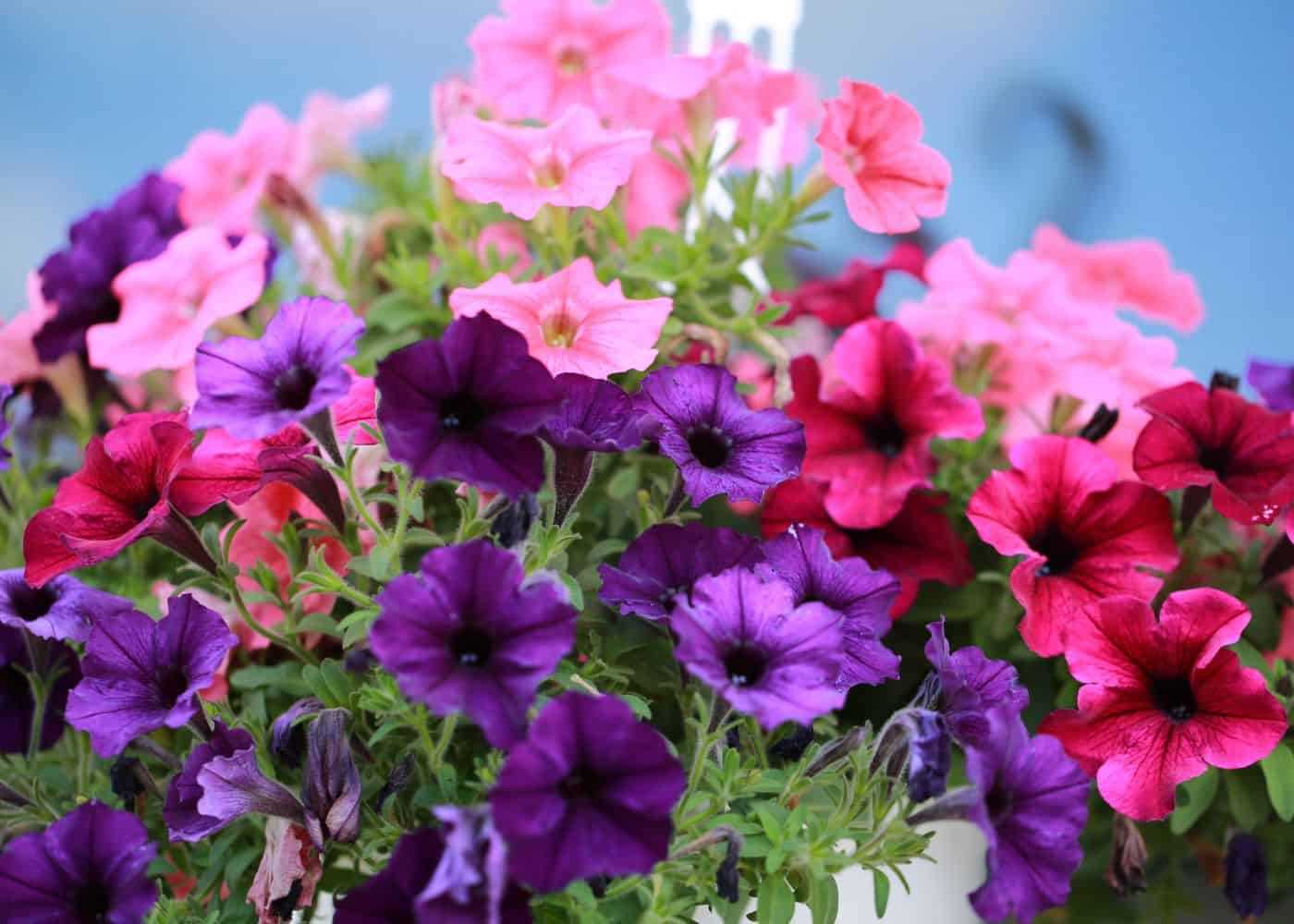
When petunias are left unpinched, they tend to become tall and leggy, with leaves and flowers concentrated at the top. This dense growth can inhibit airflow and create a favorable environment for diseases, such as powdery mildew. By pinching the plants, you improve airflow and reduce the risk of disease, ensuring healthier and more vigorous petunias.
4. Enhances plant shape and appearance
Pinching petunias helps to create a more symmetrical and visually appealing plant. By removing the growing tips, you can shape the plant and prevent it from becoming too lopsided or uneven. This is especially important for hanging baskets, window boxes, or other decorative displays where a neat and well-rounded appearance is desired.
5. Extends the blooming period
By pinching petunias and promoting bushier growth, you can extend the blooming period of the plant. More side shoots mean more flowers, ensuring a longer-lasting and more colorful display in your garden. This is especially beneficial for gardeners who want their petunias to bloom for an extended period or in climates with shorter growing seasons.
How to pinch petunias
To pinch petunias, simply use your fingers or sharp pruning shears to remove the growing tips of the main stem and any long, leggy side shoots. Aim to pinch just above a set of leaves or a branching point. This will encourage the plant to produce new shoots and create a bushier appearance.
Remember to pinch petunias regularly throughout the growing season, especially after the plant has produced a flush of flowers. This will keep the plant compact and encourage continuous blooming.
Techniques for Pinching Petunias Properly
Pinching is a crucial technique for promoting bushy growth and more abundant flowering in petunias. Here are some effective techniques for pinching petunias properly:
1. Start pinching when the petunias are young
It is best to start pinching petunias when they are still young and have developed a few sets of true leaves. This encourages branching and leads to a fuller, more compact plant.
2. Pinch off the stem above a leaf node
To pinch a petunia properly, gently hold the stem between your thumb and forefinger and pinch it off just above a leaf node. A leaf node is the point where a leaf joins the stem. This will stimulate new growth from the leaf node and promote branching.
3. Pinch regularly throughout the growing season
Pinching is not a one-time activity. To keep your petunias bushy and full, you will need to pinch them regularly throughout the growing season. Aim to pinch off the growing tips every few weeks or whenever the plants start to look leggy.
4. Remove spent blooms
In addition to pinching off the growing tips, it is important to remove spent blooms. This process is called deadheading. Deadheading not only improves the appearance of the plant but also encourages more blooms to form.
5. Dispose of pinched stems and blooms properly
After pinching and deadheading, it is important to dispose of the pinched stems and spent blooms properly. They can harbor pests and diseases, so it is best to remove them from the garden to prevent any potential issues.
6. Water and fertilize after pinching
After pinching your petunias, be sure to water them thoroughly and provide them with a balanced fertilizer to support new growth. This will help the plants recover quickly and continue to thrive.
7. Consider using a liquid fertilizer
If you want to give your pinched petunias an extra boost, consider using a liquid fertilizer. Liquid fertilizers are quickly absorbed by the plants and can provide immediate nutrition.
By following these techniques for pinching petunias properly, you can enjoy fuller, bushier plants with more abundant blooms. Happy pinching!
The Importance of Fertilising Petunias
Fertilising petunias is an essential part of their care and maintenance. Petunias are heavy feeders and require regular fertilisation to ensure optimal growth and abundant blooming.
Why is fertilising petunias important?
- Promotes healthy growth: Fertilisers provide essential nutrients that petunias need for healthy growth. Nitrogen, phosphorus, and potassium are the primary nutrients required in larger quantities.
- Boosts flower production: Proper fertilisation encourages petunias to produce more flowers. Fertilisers high in phosphorus can promote the growth of strong root systems and abundant blooms.
- Prevents nutrient deficiencies: Regular fertilisation helps prevent nutrient deficiencies in petunias. Lack of nutrients can lead to stunted growth, yellowing leaves, and poor flowering.
- Enhances color and vigor: Fertilisers can improve the color intensity and overall vigor of petunia plants. A well-fed petunia will have vibrant flowers and lush foliage.
When and how to fertilise petunias?
It is best to fertilise petunias every 3-4 weeks during the growing season, starting after the last frost date. Here are a few tips for fertilising petunias:
- Choose the right fertiliser: Look for a balanced, water-soluble fertiliser with a ratio of 20-10-20 or 14-14-14, which indicates the nitrogen, phosphorus, and potassium content.
- Follow the instructions: Read and follow the instructions on the fertiliser packaging. Over-fertilisation can lead to burns and damage to the plants.
- Apply evenly: Apply the fertiliser evenly around the base of the petunia plants. Avoid direct contact with the foliage to prevent burning.
- Water thoroughly: After applying the fertiliser, water the plants thoroughly to ensure the nutrients reach the root system. This also helps prevent fertilizer burn.
- Monitor and adjust: Keep an eye on the petunia plants and monitor their growth. Adjust the fertiliser application if necessary, based on the plant’s needs.
Conclusion
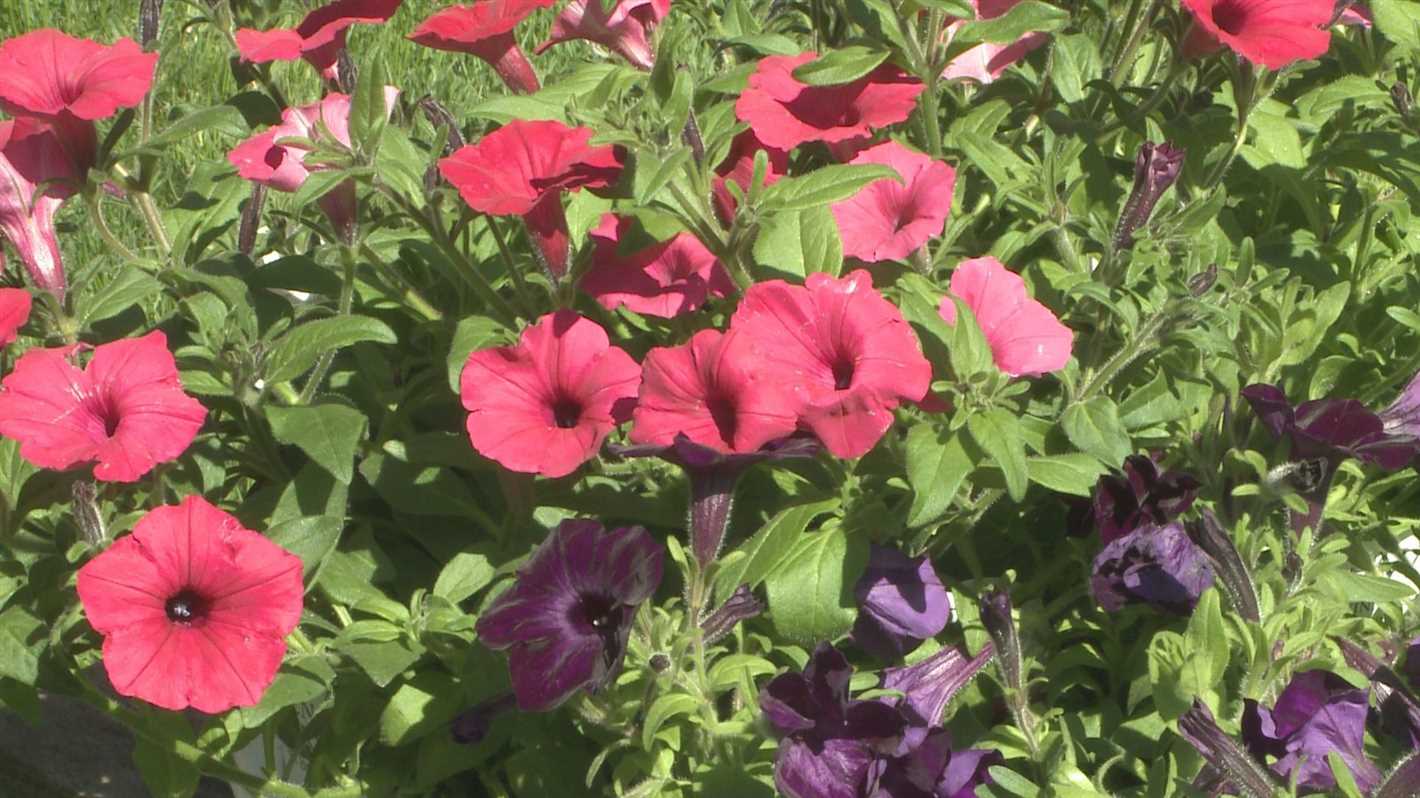
Fertilising petunias is crucial for their overall health and performance. By providing them with the right nutrients at the right time, you can ensure vigorous growth, abundant flowering, and vibrant colors in your petunia plants.
Choosing the Right Fertiliser for Petunias
When it comes to growing healthy and vibrant petunias, choosing the right fertiliser is essential. A proper fertiliser not only provides essential nutrients for the plant’s growth but also ensures a longer blooming period and overall health.
1. Understanding the Nutritional Needs of Petunias
Petunias have specific nutritional requirements that need to be met for optimal growth. The primary macronutrients that petunias need are nitrogen (N), phosphorus (P), and potassium (K), commonly referred to as NPK. In addition to these, petunias also require other micronutrients like iron, magnesium, and calcium.
2. Choosing the Right NPK Ratio
Before selecting a fertiliser, it’s important to consider the NPK ratio, which represents the concentration of nitrogen, phosphorous, and potassium in the product. Petunias generally thrive with a higher amount of phosphorous and potassium compared to nitrogen. A recommended NPK ratio for petunias is 10-20-10 or 15-30-15, although other formulations with a similar ratio will work well too. A higher phosphorous content promotes better blooming, while potassium helps with overall plant health and disease resistance.
3. Slow-Release vs. Water-Soluble Fertilisers
There are two main types of fertilisers: slow-release and water-soluble. Slow-release fertilisers provide a steady and slow release of nutrients over a longer period of time, reducing the risk of over-fertilisation. On the other hand, water-soluble fertilisers dissolve in water and provide a quick nutrient boost. For petunias, a combination of both types can be beneficial. Use a slow-release fertiliser at planting time and supplement with water-soluble fertilisers every two weeks during the growing season.
4. Organic vs. Synthetic Fertilisers
Another consideration when choosing a fertiliser is whether to go with organic or synthetic options. Organic fertilisers are derived from natural sources and provide a slow and steady release of nutrients. They are environmentally friendly and improve soil health over time. Synthetic fertilisers, on the other hand, are manufactured with specific nutrient concentrations and provide a quick nutrient boost. Both types can be used for petunias, but it’s important to follow the recommended application rates to avoid over-fertilisation.
5. Additional Considerations
Aside from the NPK ratio and fertiliser type, there are a few additional factors to consider when choosing a fertiliser for petunias:
- Soil pH: Petunias prefer slightly acidic soil with a pH range of 5.5 to 6.5. Consider using a fertiliser that is formulated for these pH levels.
- Micronutrients: Look for fertilisers that contain micronutrients like iron, magnesium, and calcium, which are essential for petunia growth.
- Application Rate: Follow the instructions on the fertiliser packaging for the recommended application rate. Over-fertilisation can damage petunias.
- Watering: Always water the plants thoroughly after applying fertiliser to prevent burn and distribute the nutrients evenly.
Conclusion
Choosing the right fertiliser for your petunias is crucial for their growth and blooming. Consider their nutritional needs, the NPK ratio, and the type of fertiliser (slow-release or water-soluble). Organic or synthetic fertilisers can both be used, but it’s important to follow the recommended application rates. By providing the right nutrients, you can ensure healthy, vibrant, and long-lasting petunias.
Tips for Properly Fertilising Petunias
Petunias are beautiful and vibrant flowers that can add a burst of color to any garden or landscape. To keep these flowers healthy and thriving, proper fertilisation is essential. Here are some tips to help you fertilise your petunias effectively:
- Choose the Right Fertiliser: When it comes to fertilising petunias, choosing the right fertiliser is crucial. Look for a balanced fertiliser with an equal ratio of nitrogen (N), phosphorus (P), and potassium (K). For example, a 10-10-10 or 12-12-12 fertiliser would work well for petunias.
- Fertilise at the Right Time: Petunias require regular fertilisation for optimal growth. Start fertilising your petunias about two weeks after planting and continue every two to four weeks throughout the growing season. Avoid fertilising during periods of extreme heat or drought.
- Follow the Instructions: Always read and follow the instructions on the fertiliser packaging. The instructions will provide guidance on how much fertiliser to use based on the size of your petunias and the specific brand of fertiliser.
- Apply Fertiliser Uniformly: To ensure an even distribution of nutrients, apply the fertiliser uniformly across the soil surface. Use a fertiliser spreader or your hands to scatter the granules or apply liquid fertiliser with a watering can or sprayer.
- Water Thoroughly: After fertilising, water your petunias thoroughly. This helps to dissolve the fertiliser and carry the nutrients down to the plant roots. Be careful not to overwater, as excessive moisture can lead to root rot and other problems.
- Avoid Fertiliser Contact with Foliage: When applying fertiliser, be careful to avoid direct contact with the petunia foliage. Fertiliser can burn the leaves and cause damage. If fertiliser does come into contact with the foliage, be sure to wash it off with water immediately.
- Monitor Plant Response: After fertilising, monitor your petunias for any signs of nutrient deficiencies or excesses. Yellowing leaves, stunted growth, or unusual symptoms may indicate a problem. Adjust your fertiliser regimen accordingly or seek advice from a horticulturist.
- Consider Organic Options: If you prefer organic gardening methods or want to limit the use of synthetic fertilisers, consider using organic alternatives for fertilising your petunias. Compost, well-rotted manure, or organic liquid fertilisers can provide nutrients while enriching the soil.
Fertilising your petunias correctly is key to maintaining their health and bloom. By following these tips, you can ensure that your petunias receive the necessary nutrients to thrive and produce beautiful flowers all season long.
The Art of Picking Petunias
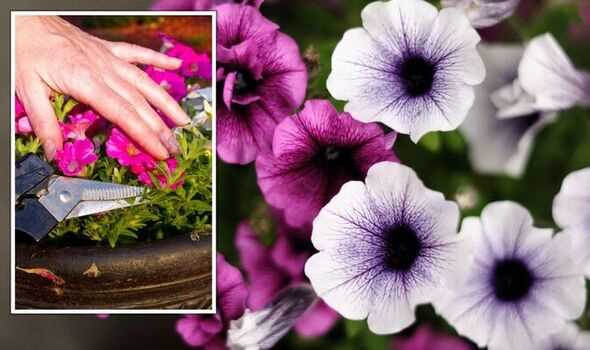
Picking petunias is an essential part of their care to promote healthy growth and abundant flowering. Here are some tips and techniques to help you master the art of picking petunias:
1. Timing is Key
Choose the right time to pick your petunias. It is best to pick them in the morning or late afternoon when they are well-hydrated and the temperatures are cooler.
2. Look for the Perfect Bloom
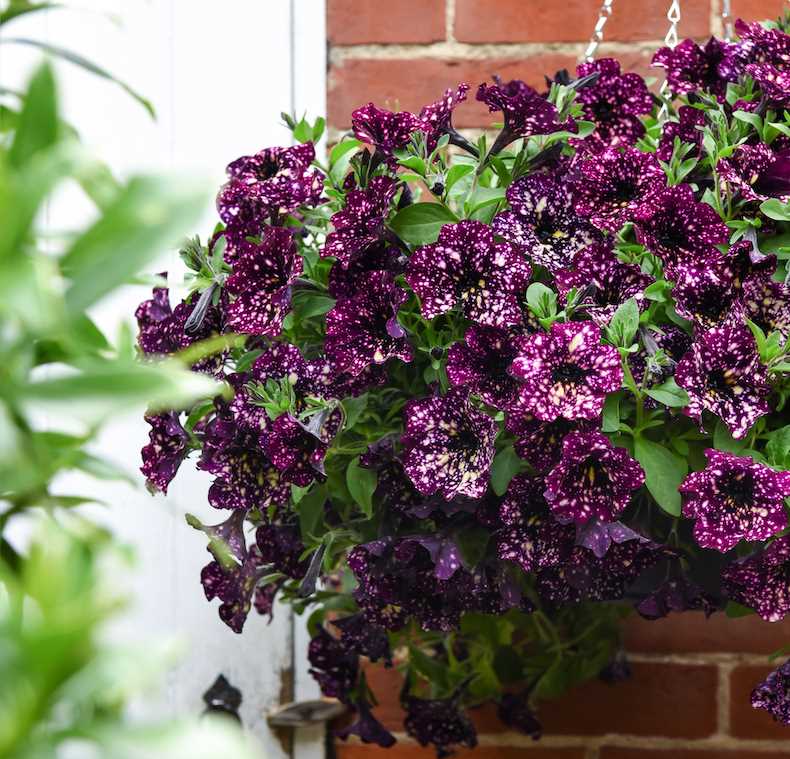
Inspect the petunia plant and look for flowers that are fully open and vibrant in color. Avoid picking blooms that are wilted, discolored, or have signs of disease or pests.
3. Use Clean and Sharp Tools
Before picking petunias, make sure to clean your tools with a mild detergent or disinfectant to prevent the spread of diseases. Use sharp and sterile pruners or scissors to make clean cuts.
4. Avoid Damaging the Plant
When picking petunias, be gentle and avoid damaging the plant. Support the stem with your hand while making the cut to prevent unnecessary stress on the plant.
5. Cut at the Right Angle
Make a clean cut just above a leaf node or lateral shoot. This will encourage new growth and branching, resulting in a bushier and more compact petunia plant.
6. Remove Spent Flowers
Regularly remove spent or faded flowers to encourage more blooms and prevent the petunia plant from going to seed. This process, called deadheading, will redirect the plant’s energy into producing new flowers instead of seed production.
7. Handle with Care
After picking petunias, handle the blooms with care to prevent bruising or damaging the delicate petals. Keep them in a clean container with water and place them in a cool, shaded area until you are ready to arrange or display them.
8. Enjoy the Fruits of Your Labor
Once you have picked your petunias, take the time to arrange them in a vase or use them to add color and beauty to your garden or patio. Admire and enjoy the stunning flowers you have nurtured and picked with love and care.
By following these tips, you can ensure that your petunias continue to thrive and provide you with beautiful blooms throughout the growing season.
Best Practices for Picking Petunias
Picking petunias is an essential task for maintaining the health and beauty of your plants. Follow these best practices to ensure success:
1. Timing
Choose the right time of day to pick your petunias. Early morning or late afternoon is ideal, as the plants are less stressed and the flowers are hydrated.
2. Tools
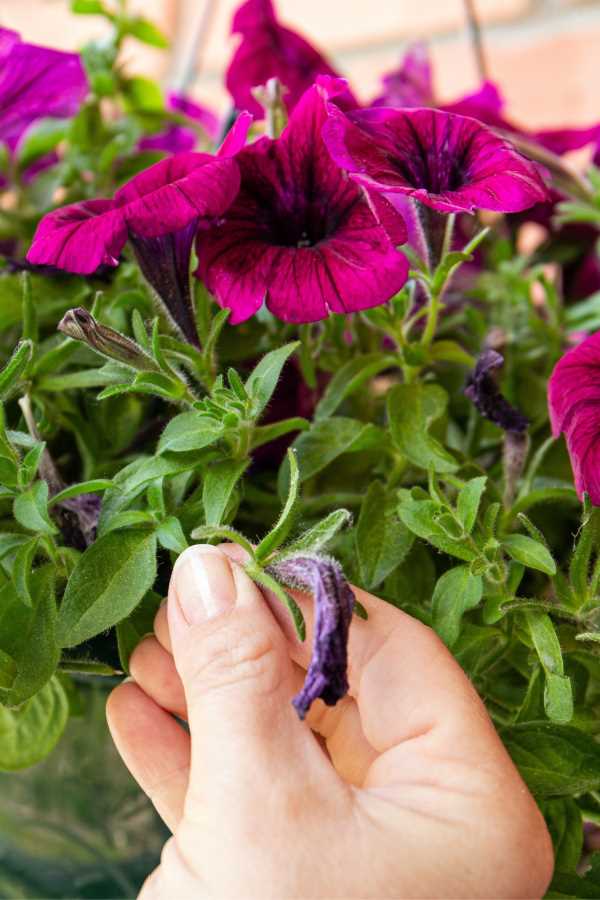
Use clean and sharp gardening shears or scissors to avoid damaging the plant or introducing disease. Clean the tools before and after each use to prevent the spread of pests or pathogens.
3. Selecting Flowers
Look for petunias with vibrant, fully open flowers. Avoid picking flowers that are wilted, discolored, or have damaged petals. These may indicate pest or disease problems.
4. Stem Position
When selecting which flowers to pick, choose ones that have long stems. This will make it easier to arrange them in vases or other containers without crowding the flowers.
5. Removing Flowers
Hold the stem with one hand and use the other hand to carefully snip or pinch off the flower where it meets the stem. Avoid tearing or ripping the petals, as this can lead to wilting or rotting.
6. Deadheading
Regularly deadhead your petunias by removing faded or spent flowers. This will encourage new growth and prolong the flowering period. Deadheading also prevents the plant from going to seed, promoting more blooms.
7. Storage
Place the picked petunias in a clean container filled with water immediately after picking. Remove any leaves that will be submerged in the water to prevent bacterial growth. Keep the flowers in a cool, shaded area until you can arrange them.
8. Arranging the Flowers
Before arranging the petunias in a vase or bouquet, cut the bottom of the stems at a diagonal to help the flowers absorb water. Remove any excess foliage that will be below the water line. Arrange the flowers in a balanced and aesthetically pleasing arrangement.
9. Enjoying and Maintaining
Once you have picked and arranged your petunias, place them in a location away from direct sunlight and drafts. Change the water every few days and remove any dead or wilting flowers to maintain the freshness and beauty of your arrangement.
By following these best practices, you can enjoy the vibrant and stunning beauty of your petunias both in your garden and in cut flower arrangements.
Questions and Answers:
What is pinching in petunias and why is it important?
Pinching in petunias refers to the act of removing the tips of the plant’s main stems. This helps to encourage branching and promote a bushier growth habit. Pinching is important because it helps to create a fuller and more compact plant, resulting in more flowers.
When should I pinch my petunias?
It is best to pinch your petunias when they are still young and have a few sets of leaves. This is usually done 3-4 weeks after planting. However, be careful not to pinch them too late, as this can delay flowering.
How do I pinch petunias?
To pinch petunias, simply use your fingers or a clean pair of gardening shears to remove the tips of the main stems. Pinch the stem just above a set of leaves or a branching point. Make sure to pinch gently but firmly to avoid damaging the plant.
What is the benefit of fertilising petunias?
Fertilising petunias provides them with essential nutrients that they need to grow and flourish. It helps to promote healthy foliage, abundant flowering, and strong root development. Fertilisers also help petunias resist diseases and pests.
How often should I fertilise my petunias?
It is recommended to fertilise petunias every 2-3 weeks during the growing season. However, be careful not to over-fertilise, as this can lead to excessive foliage growth at the expense of flowers.
What type of fertiliser should I use for petunias?
For petunias, it is best to use a balanced water-soluble fertiliser. Look for a formula with equal amounts of nitrogen, phosphorus, and potassium (NPK). This will provide the necessary nutrients for healthy growth and blooming.
When should I pick the flowers from my petunias?
You can start picking the flowers from your petunias when they are fully open and vibrant in color. This is usually when the petals are fully unfolded. Regularly picking the flowers will encourage the plant to produce new blooms and prolong the overall flowering period.







